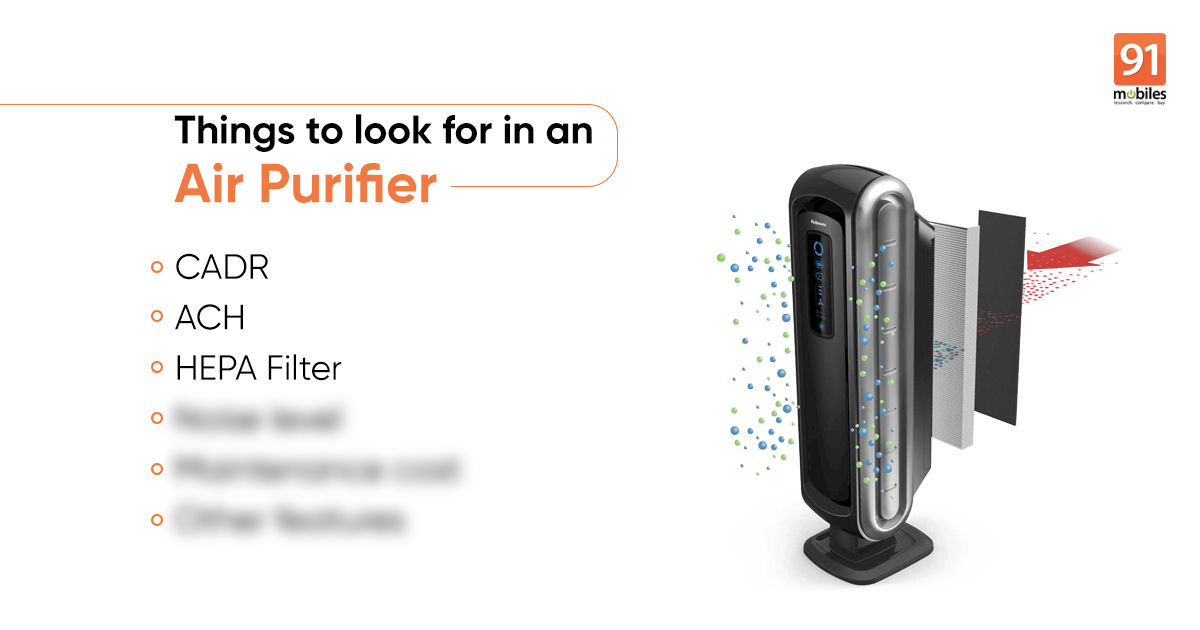
Air purifiers are a must-have in India these days and you should know what to look for before deciding which air purifier you will buy.
CADR, ACH, HEPA, all these terms sound too outlandish and technical for the average person, right? But these are some of the things you need to know when you buy an air purifier. Anything wrong here and there, you’ll be left with a device doing nothing but throwing cold air on your face. Air purifiers are a great device to keep at home or offices, especially at this time of the year when air pollution is at its worst. They can filter out pollutants, including those small PM2.5 particles, from the air that can travel deep into our respiratory tract, reaching the lungs and cause irritation, coughing, sneezing, runny nose, and shortness of breath. There are a ton of air purifiers out there even under Rs 10,000, but not every air purifier can be the best fit for your room. Here are some factors to consider before you go out looking for an air purifier:
Read more: Best purifiers to buy in India under Rs 10,000, Rs 20,000, and Rs 40,0001. Room size
It’s the most important thing. Keep the dimensions of the room, in which you’re going to install the air purifier, at the back of your mind. Air purifiers are designed according to the rooms so that they can efficiently clean the air without making too much noise and consuming energy. Also, pre-decide on which part of the room you’re going to place the air purifier. If it’ll be at the corner with its back slapped against the wall, an air purifier with a rectangular design and side vents would work. Otherwise, opt for an air purifier with circular or squarish air purifiers with 360-degree air suction.
2. CADR
CADR is an acronym for Clean Air Delivery Rate. This term is used in air purifiers to indicate the speed at which they can clean the air in a room. The general rule with CADR is it should be higher than the dimension of the room. CADR is measured in cubic meters per hour or m3/h. Almost every air purifier in India has CADR of 250 m3/h or above. An air purifier with 250 m3/h CADR should be ideal for a 10×10 sq feet space.
3. Filters
The filters are the heart of any air purifier. You’ll come across at least two on most air purifiers out there: a pre-filter and high-efficiency particulate air (HEPA) aka True HEPA. These filters are good enough to tackle the air pollutants that are in the air. You may find devices that advertise “HEPA-type” filters but that aren’t actually rated to meet a HEPA filtration level.
The pre-filter handles those big particles, PM10 range (10 micrometres in size), while the HEPA/ true HEPA filters fight those fine PM2.5 particles. HEPA filters, recommended by EPA and American Lung Association, can trap 99.97 percent of particles that are 0.3 microns (millionths of a meter) or larger in size. In addition to this, some air purifiers also highlight carbon filter, which tackles bad odour in the air as well as pet dander and cigarette smoke removing filters.
4. ACH
ACH, short for air change per hour, basically refers to the number of times an air purifier can filter the entire volume of air of a given area each hour. This is handy when the air quality index (AQI) is at its worst. To get the ACH right, make sure you choose an air purifier whose CADR is a perfect fit for the room.
5. Noise level
Air purifiers have fans inside that suck the bad air and release the fresh one. As much as you would love to have that fresh air, you wouldn’t like the air purifier making too much noise. Therefore, it’s another parameter to look for when buying an air purifier. Some of the air purifiers are practically silent, especially on low settings, while others make a humming sound as you turn them up. Look for that noise-level ranges, measured in decibels (dB), in the device’s specs. The lower the decibel, the quieter the air purifier is going to be. The standard noise range for air purifiers is at around 17bD to 60dB.
6. Maintenance cost
The maintenance in air purifiers is mostly in the form of filters. Apart from pre-filter – which are washable, the HEPA, carbon, and other filters an air purifier uses have a fixed life. The life of these filters depends on your usage – most of them are rated to last a season when used 8-9 hours a day. A handful of air purifiers come with filter replacement alert. The cost of these filters depends on company to company, so when you’re out looking for an air purifier do check out the prices of its filters, validity, and where you can buy them.
7. Other features
Other features of an air purifier mostly constitute display, real-time air pollution indicator, app support, Wi-Fi connectivity, remote control, and fan speed. These are not as important elements of an air filter as the ones discussed above and can be skipped unless money is no object. The features only add convenience to the air purifiers.
That’s it! This was all you need to know about what to look for while buying air purifiers. The other things that you may consider when buying the device are size, portability, and power efficiency – opt for air purifiers that are Energy Star-certified.
from 91mobiles.com https://ift.tt/2UjkINV
Post a Comment